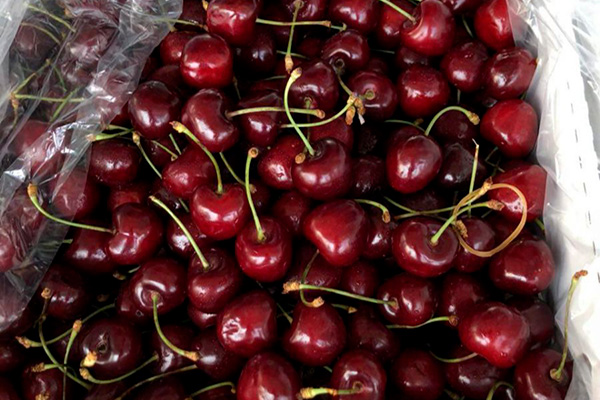Researchers at the University of Hannover have made an important discovery that could revolutionize the sweet cherry industry.
Their research, published in the Journal of the American Society for Horticultural Science, reveals how the application of calcium can reduce the occurrence of macrocracking in sweet cherries, a common issue causing significant economic losses for cherry growers worldwide.
The Crux of Cracking
Macrocracking in sweet cherries is not just a superficial defect, but a deep-seated problem affecting the fruit's integrity. When cherries crack, they become susceptible to microbial infections and rapid deterioration, rendering them unsellable and unsuitable for consumption.
This has long been a thorn in the side of producers, who have struggled to find a reliable solution to this pervasive issue. The study conducted by the team at the University of Hannover, led by Professor Moritz Knoche, delves at the cellular level to understand how calcium acts as a fortifying agent.
The research shows that calcium strengthens the cell walls of cherries, improving their structural integrity and reducing the likelihood of them cracking under environmental pressures, such as rain or temperature fluctuations.
Calcium: A Microscopic Shield
The key to the effectiveness of calcium lies in its ability to intervene in the early stages of crack formation. When calcium is applied to cherries, it promotes the cross-linking of cell wall components, which in turn modulates the activity of enzymes.
This process results in a more robust cell wall, capable of withstanding greater mechanical stresses. Interestingly, the study found that even at low concentrations, calcium can prevent the expansion of microscopic cracks into larger, visible macrocracks.
This discovery is particularly significant because it suggests that even minimal applications of calcium can have a substantial impact on the quality and longevity of the fruits.
Study Methodology
The study on the role of calcium in reducing macrocracking in sweet cherries employed a multifaceted approach to uncover the mechanisms at play. Here is a detailed analysis of the methodologies used:
Advanced Imaging and Biochemical Analysis
Researchers utilized state-of-the-art imaging techniques to monitor the development of macrocracks in real-time. This allowed them to observe the effects of calcium on the cell walls of the fruit as cracks formed and expanded.
Biochemical analyses complemented these observations, providing insights into changes in cell wall composition and enzymatic activity influenced by calcium.
The "Zipper Model"
Professor Moritz Knoche’s team at the University of Hannover proposed the "zipper model" to explain the cracking process in cherry fruits.
This model offers a consistent explanation aligning with all experimental results obtained so far. It suggests that when calcium contacts the cell wall through a microscopic fissure in the cuticle, it inhibits the extension of this microscopic fissure into a larger macrocrack.
Calcium Chloride (CaCl2) Spray Applications
The study involved multiple applications of calcium chloride (CaCl2) sprays on cherry fruits. These applications were performed under simulated rain conditions in a mist chamber, significantly reducing the percentage of macrocracked fruits.
Researchers also dipped the fruits in CaCl2 solutions, observing a decrease in macrocracking depending on the concentration.
Nickel Staining and Cationic Gold Labeling
To analyze the effects of calcium on cell walls, the team used nickel staining of polygalacturonate on freehand sections and cationic gold labeling of anionic binding sites in cell walls. These methods allowed visualization of the distribution and impact of calcium within the cell walls.
Secondary Ion Mass Spectrometry
Analytical detection of calcium ions, specifically isotopes 40Ca and 44Ca, was conducted using secondary ion mass spectrometry. This technique provided precise measurements of calcium concentrations, further clarifying its role in strengthening the cell walls of cherry fruit.
By combining these various methodologies, the study achieved a comprehensive understanding of how calcium contributes to reducing macrocracking in sweet cherries, paving the way for practical applications in cherry cultivation.
Implications for the Future
The implications of this research are far-reaching. With a better understanding of how calcium works, cherry growers can optimize the use of calcium-based sprays to enhance fruit quality and reduce post-harvest losses.
This could lead to more stable production rates, higher quality fruit in the market, and greater profitability for growers.
Moreover, the findings provide a framework for addressing similar issues in other fruit crops, potentially leading to improvements in agricultural practices overall. As the fruit industry continues to seek sustainable solutions to production challenges, studies like this one from the University of Hannover serve as beacons for innovation and progress.
Source: Nature World News
Image: SL Fruit Service
Cherry Times - All rights reserved












